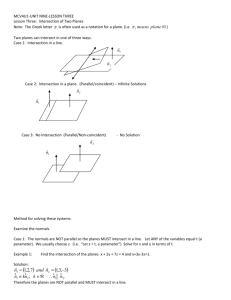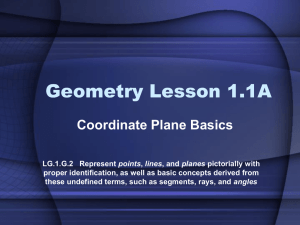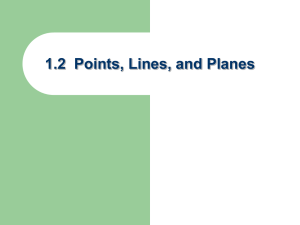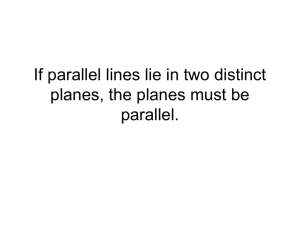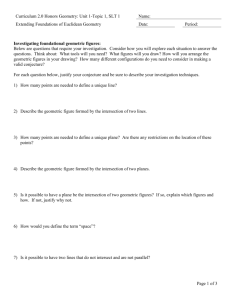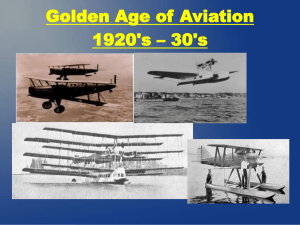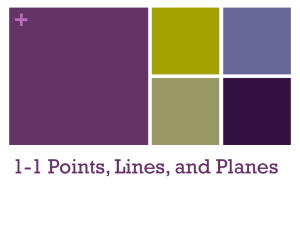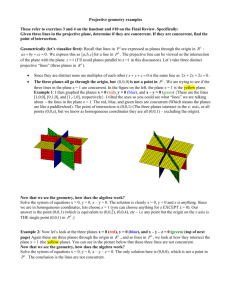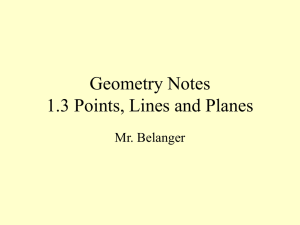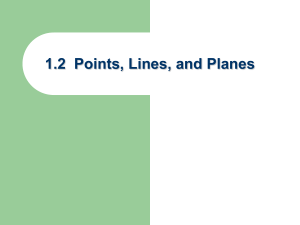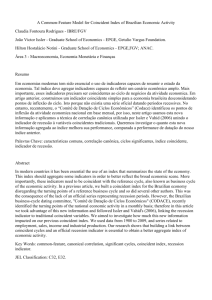Intersection of Three Planes
advertisement
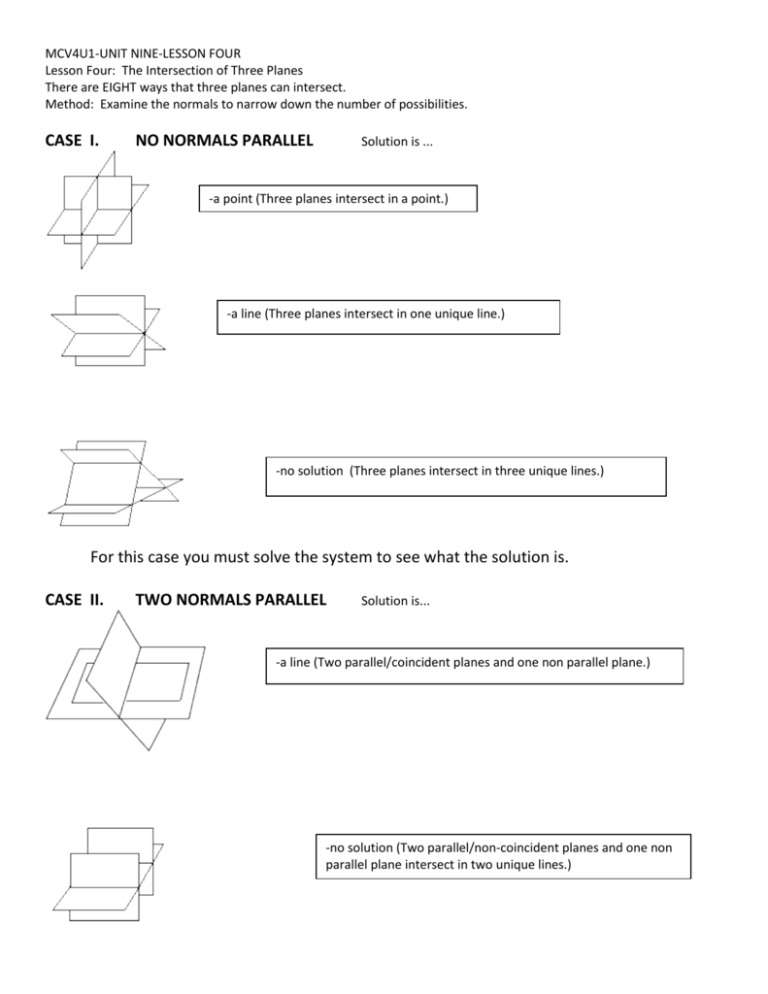
MCV4U1-UNIT NINE-LESSON FOUR Lesson Four: The Intersection of Three Planes There are EIGHT ways that three planes can intersect. Method: Examine the normals to narrow down the number of possibilities. CASE I. NO NORMALS PARALLEL Solution is ... -a point (Three planes intersect in a point.) -a line (Three planes intersect in one unique line.) -no solution (Three planes intersect in three unique lines.) For this case you must solve the system to see what the solution is. CASE II. TWO NORMALS PARALLEL Solution is... -a line (Two parallel/coincident planes and one non parallel plane.) -no solution (Two parallel/non-coincident planes and one non parallel plane intersect in two unique lines.) MCV4U1-UNIT NINE-LESSON FOUR CASE III. ALL NORMALS PARALLEL Solution is... -no solution (Three parallel non/coincident planes.) -a plane (Three parallel/coincident planes.) -no solution (Two parallel/coincident planes and one parallel/noncoincident plane.) Example 1. n1 1,2,3 n2 1,1,3 n3 2,1,6 1 : x 2 y 3z 4 0 Solve 2 : x y 3 z 8 0 3 : 2 x y 6 z 14 0 no normals are parallel Therefore we must solve the system to see what solution we have. The reduced matrix is..... 1 2 3 4 0 3 6 12 so the solution is a point..... x, y, z 1,2,3 0 3 0 6 Example 2. n1 1,1,2 n 2 3,1,14 n3 1,2,0 1 : x y 2 z 2 Solve 2 : 3 x y 14 z 6 3 : x 2 y 5 no normals are parallel MCV4U1-UNIT NINE-LESSON FOUR Therefore we must solve the system to see what solution we have. The reduced matrix is..... 1 1 2 2 0 1 2 3 so the solution is a line. Let z=t, a parameter and express x and y in terms of t. 0 0 0 0 The solution is the line x, y, z 4t 1,3 2t, t . Example 3. Solve 1 : x y 4z 5 2 : 3 x y z 2 3 : 5x y 9z 1 n1 1,1,4 n2 3,1,1 no normals are parallel n3 5,1,9 Therefore we must solve the system to see what solution we have. The reduced matrix is..... 1 1 4 5 0 4 11 19 so there is no solution. The three planes intersect in three unique lines. 0 0 0 5 1 : x y 2z 1 Example 4. Solve 2 : 2 x 2 y 4 z 2 3 : 3x 2 y z 4 n1 1,1,2 n2 2,2,4 n3 3,2,1 n2 2n1 , but n2 kn3 ; k 2 and 1 are parallel only. Check for coincidence. D2 2 D1 . 2 and 1 are coincident too. Therefore we have two parallel/coincident planes and one non parallel plane intersecting in a unique line. 1 3 6 7 t , t ,t . 5 5 5 5 Let z=t, a parameter and solve for x and y in terms of t....to get.... x, y, z 1 : 2 x y 3z 4 Example 5. Solve 2 : 2 x y 3 z 7 3 : 3 x y z 10 MCV4U1-UNIT NINE-LESSON FOUR n1 2,1,3 n2 2,1,3 n3 3,1,1 n1 1n2 , but n1 kn3 ; k 1 and 2 are parallel only. Check for coincidenc e. D1 1D2 . 1 and 2 are non coincident . Therefore there is no solution. Two parallel, non-coincident planes are intersected by a third in two unique lines. Example 6. Solve n1 1,1,2 1 : x y 2z 4 2 : 2x 2 y 4z 8 3 : 3 x 3 y 6 z 12 1 1 1 1 n2 2,2,4 n1 n2 n3 and D1 D2 D3 2 3 2 3 n3 3,3,6 The three planes are parallel and coincident . Therefore the solution is the plane. Since all three equations are essentially the same, choose one and let z=t, y=s, t and s are parameters. Using 1 , solve for x in terms of s and t. x s 2t 4 Then the solution is the plane given by ys zt Example 7. Solve 1 : 2 x y 5z 4 2 : 2 x y 5z 7 3 : 4 x 2 y 10 z 9 n1 2,1,5 n2 2,1,5 n3 4,2,10 1 1 1 n 1 n2 n3 but D1 D2 and D1 D3 and D2 D3 2 2 2 Therefore the three planes are parallel/non-coincident. So there is no solution. Example 8. Solve 1 : 3x 4 y 5z 6 2 : 6x 8y 10z 13 3 :12x 16y 20z 26 n1 3,4,5 n 2 6,8,10 n3 12,16,20 n 3 4n1 2n2 but D3 4 D1 and D3 2 D2 and 4 D1 2 D2 Therefore two planes are parallel/coincident ( 3 and 2) and one plane is parall/non-coincident ( 1 ). So there is no solution.
